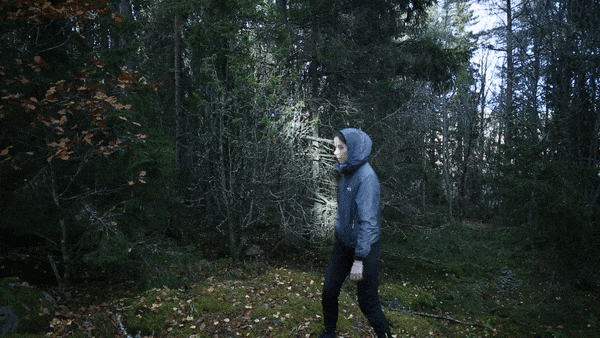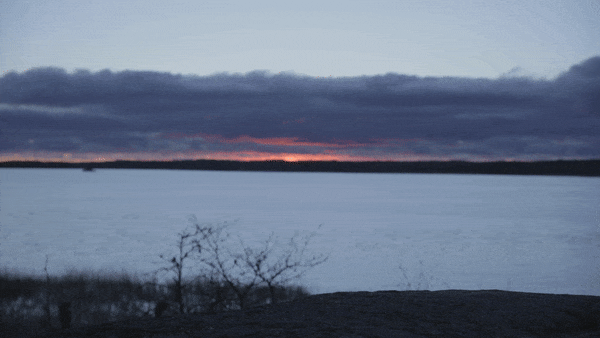
Saavuin Saareen erilaisten valojen, aurinkopaneelin ja muun elektroniikan kanssa, valmiina alkaa rakentamaan mahdollisten teosten prototyyppejä. Mutta residenssijakso johdattelikin minut pysähtymään syvemmin ja pohtimaan projektin mahdollisuuksia laajemmin. Tähän vaikuttivat erilaiset hienot kohtaamiset residenssin aikana sekä ohjaus, jota sain sekä residenssiohjelmaan kuuluneelta mentorilta, että residenssin aikana kohtaamiltani muilta ihmisiltä. Lisäksi kokeilut luonnossa sähkövalojen kanssa tuntuivat ristiriitaisilta ja avasivat uusia kysymyksiä, kuten kirjoitin edellisessä postauksessani.
I arrived at Saari with various lights, a solar panel and other electronics, ready to start building prototypes of possible works. But the residency period led me to stop more deeply and think about the possibilities of the project more broadly. This was influenced by various great encounters during the residency, as well as guidance I received both from the mentor who was part of the residency program and from other people I met during the residency. In addition, experiments in nature with electric lights seemed contradictory and opened up new questions, as I wrote in my previous post.

Aloin myös palautua residenssissä. Eräänä lokakuisena sunnuntaiaamuna maatessani Saaren lähimetsässä ja katsellessani aamuauringon säteitä ruskan värittämän metsän katon läpi, huomasin tuntevani syvää yhteyden kokemusta ympäröivää luontoa kohti. Metsänpohja nousi viileän kosteana kannattelemaan minua ja linnut puuhastelivat aamutoimissaan korkealla puissa. Koin tuntevani kaikessa virtaavan elämän, ja elämän lisäksi myös kuoleman. Tuntui, että kaikki oli paikallaan ja juuri niinkuin kuuluukin. En halunnut mitään, enkä tarvinnut mitään ja tunsin vain kiitollisuutta ja halua palvella ja vaalia tuota voimallista ja herkkää tasapainoa.
I also started to recover in the residency. One Sunday morning in October, while lying in the nearby forest of Saari and looking at the rays of the morning sun through the forest’s roof colored by russet, I noticed that I felt a deep connection with the nature around me. The forest floor rose cool and damp to support me and the birds were busy with their morning activities high in the trees. I felt life flowing in everything, and in addition to life, also death. It felt like everything was in place and exactly as it should be. I didn’t want or need anything. I felt only gratitude and a desire to serve and nurture that powerful and delicate balance.
– By enabling us to find meaning in the world, love brings to light the axiological dimension of reality, or the inherent value in our surroundings. Through this affective mode of experience, we can discern things that dispassionate reason is blind to, as the sense of hearing is blind to colors.
Rick Anthony Furtak
It is not an effort, as if we ought to try and feel more, but instead an attitude of openness, grounded on setting aside old schema.
Elisa Aaltola

Väsymyksestä ja hämmennyksestä palautumisessa on oma oppituntinsa ja merkityksensä, sekä kollektiivinen peilausarvonsa, jota en halunnut piilottaa myöskään tästä blogista. Tässä maailmanajassa lepääminen ja pysähtyminen on radikaali teko. Se on anarkiaa vallitsevia normeja ja ylikuluttavaa elämäntapaa kohtaan.
Recovering from fatigue and confusion has its own lesson and meaning, as well as its collective mirroring value, which I didn’t want to hide from this blog either. In this time, resting and stopping is a radical act. It is anarchy towards prevailing norms and an over-consuming lifestyle.

Kuva / photo by: Kavachi
Käydessämme Turussa residenssiohjelmaan kuuluvassa Mix n mingle -iltamassa galleria Titanikissa, katsastimme myös Turun taidehallissa Leena Kelan Rest of us -näyttelyn, joka koostui kolmen videon sarjasta. Näyttelyn videossa Rest of Time Kela makaa suuren graniittilohkareen päällä täristen, oletettavasti purkaen kehostaan jännitteitä TRE-tekniikalla. Pohdin katsoessani videota, kuinka kollektiivinen ylikuormitus näkyy niin kehoissamme kuin suhtautumisessamme ympäristöömme, sekä maassa, kehossa, joka kannattelee meidät kaikki. Ylikuormitus ja stressi jumittavat kehon ja mielen ja siten kykyn kokea syvää yhteyttä ympäröivää maailmaa kohtaan. Lääke siihen on pysähtyminen, lepo.
While visiting Turku for the Mix n mingle evening at gallery Titanic, we also checked out Leena Kela’s Rest of us exhibition at Turku Art Hall, which consisted of a series of three videos. In the exhibition’s video Rest of Time, Kela lies on a large granite boulder, shaking, presumably releasing tension from her body using TRE technology. While watching the video and pondering it´s message, I thought about how collective overload can be seen both in our bodies and in our attitude towards our environment, as well as in the earth, the body that supports us all. Overload and stress petrifies the body and mind and thus the ability to experience a deep connection with the world around us. The cure for that is stopping, resting.

experience that is gained through “selfless attendance” to others – not necessarily human beings, reveal that this procedure corresponds to deep ecological paradigm of “self-realisation” through “identification” with nature for its “inherent value”.
Kurt, Zeynep Yilmaz
Palauttava yhteys löytyi luonnossa antautuessa yhä uudestaan yhdeksi luontokappaleista, osaksi kokonaisuutta. Residenssissä minulle kiteytyi, kuinka tärkeää on työskennellä luonnossa, osana sitä, eikä tarkastella sitä etäältä, erillisenä itsestä.
A restorative connection was found in nature by surrendering again and again into being one of the natural objects, as a part of the whole. During the residency, I realized how important it is to work in nature, as part of it, and not to look at it from a distance, separate from yourself.

Toronton yliopiston apulaisprofessori John Vervaeke puhuu hienon luentosarjansa Awakening from the meaning crisis Aristotelesta käsittelevässä luennossaan siitä, kuinka identifioitumalla osaksi jotain oliota, järjestelmää tai areenaa opimme ymmärtämään tuota asiaa paremmin kuin jos tarkastelisimme sitä ulkopuolelta. Ja vasta kun olemme osa areenaa, jossa liikumme, teoillamme alkaa olla merkitystä. Ilman tätä yhteyttä ympäristöönsä toimija on hukassa, ikään kuin tenniksenpelaaja jalkapallokentällä, kuten Vervaeke kuvaa.
Assistant professor at the University of Toronto John Vervaeke talks in his great lecture series Awakening from the meaning crisis about how by identifying as part of an entity, system or arena we learn to understand that thing better than if we looked at it from the outside. And only when we are part of the arena in which we move do our actions start to really matter. Without this connection to one´s environment, the actor is lost, like a tennis player on a soccer field, as Vervaeke describes.
Tämä nomologinen järjestys tai eksistentiaalinen maailmankuva tuo meille kokemuksen siitä, että maailmassa on järkeä ja merkitystä. Koen, että jotain tämän kaltaista myös minussa tapahtui residenssin aikana. Tuntui, kuin ikään kuin palaset olisivat palanneet paikalleen.
This nomological order or existential worldview brings us the experience that there is sense and meaning in the world. I feel that something like this also happened to me during the residency. It was as if the pieces had fallen back into place.

Samassa luennossa Vervaeke esittelee myös kahden olemisen tavan dikotomian – having mode ja being mode. Näistä being mode, jonka voisi kääntää vapaasti suomeksi olemisen tilaksi, on tapa olla vuorovaikutuksessa maailman tai olion kanssa tarvitsematta vastaparilta mitään ja manipuloimatta sitä, vaan pyrkien vastavuoroiseen oivallukseen yhteydellisessä kanssakäymisessä. Tämän olemisen tavan pohjaintressinä ei ole tarpeiden täyttäminen vaan yhdessä merkityksen luominen.
In the same lecture, Vervaeke also presents the dichotomy of two ways of being – having mode and being mode. The latter, being mode, is a way of interacting with the world or an object without needing anything from the other and without manipulating it, but rather striving for insight in relational interaction. The basic interest of this way of being is not fulfilling needs but creating meaning together.

Löysin residenssissä myös Iris Murdochin, Simone Weilin ja syväekologisen ajattelun äärelle. Innostuin Murdokin rakkaudellisen huomion käsitteestä, se tuntui kuvailevan kokemuksiani luonnossa ja tukevan käsitteellisesti jotain minne olin löytänyt intuitiivisesti laskeutumalla. Murdokin rakkaudellisen huomion käsite viittaa samanlaiseen havittelemattoman läsnäolon tilaan kuin Vervaeke luennossaan.
In residency I also found Iris Murdoch, Simone Weil and deep ecology. I got inspired by Murdok’s concept of loving attention. It seemed to describe my experiences in nature and conceptually support something I had found to by intuitively being. Murdok’s concept of loving attention refers to a similar state of unobserved presence as Vervaeke in his lecture.
–“letting be” emerges as significant, as we are to leave others as they are, without agendas, expectations or demands. It is in such a state that one can truly recognize the reality of others.
Elisa Aaltola
– – Letting go is not based on intellectual effort. Quite literally, it spurs from passivity. Here, we come back to rational will: – – attention is its opposite, and does not seek any thing, as it is only when one steps away from seeking that the world can make itself apparent.
Murdokin mukaan rakastaminen on huomiota. Huomio on ikään kuin valokeila, jonka suuntaamme kohti rakkauden kohdetta, joka voi olla lapsi, rakastettu tai vaikkapa pieni hämähäkki. Huomio ei vaadi tai etsi hyötyä, se on sallivaa ja Murdokin mukaan antajalleen parantavaa.
According to Murdoch, love is attention. Attention is like a spotlight that we direct towards the object of love, which can be a child, a loved one or, for example, a small spider. Attention does not demand or seek benefit, it is permissive and, according to Murdoch, healing for the giver.

Huomio avaa potentiaalisen tilan, jossa on uusille merkityksille ja aidolle kohtaamiselle on mahdollisuus nousta. Tällaisessa tyhjässä tilassa jätämme taaksemme määritelmät tai toiveet siitä mitä toinen on tai tulisi olla, mitä toivoisimme toisen tekevän tai jättävän tekemättä.
Attention opens up a potential space where new meanings and genuine encounters have the opportunity to rise. In such an empty space, we leave behind the definitions or wishes of what the other is or should be, what we would like the other to do or not do.
Murdoch accentuates the role of art as a method of “letting go”, for it too invites disinterested observation.
Elisa Aaltola
Näkisin, että tällainen salliva, utelias tila, joka etsii tapoja olla vuorovaikutuksessa sekä palvella, on hyvä tapa luonnossa työskentelemiselle. Se on myös tila, jossa taiteellinen ajattelu voi elää ja hengittää.
This kind of permissive and curious space, which looks for ways to interact and serve, is a good state for working in nature. It is also a space where artistic thinking can live and breathe.
Inspiraatiota + lainaukset / Inspiration + quotes:
Kurt, Zeynep Yilmaz, 2020, “Deep Ecology” and Representation of the Non-Human
in Iris Murdoch’s Late Fiction, Interactions, 1300-574X
Rick Anthony Furtak, 2019, On the love of nature, The Routledge Handbook
of Love in Philosophy, ed. Adrienne M. Martin, Taylor & Francis
Elisa Aaltola, 2019, Love and animals, Simone Weil, Iris Murdoch and Attention as Love, The Routledge Handbook of Love in Philosophy, ed. Adrienne M. Martin, Taylor & Francis

Leave a Reply